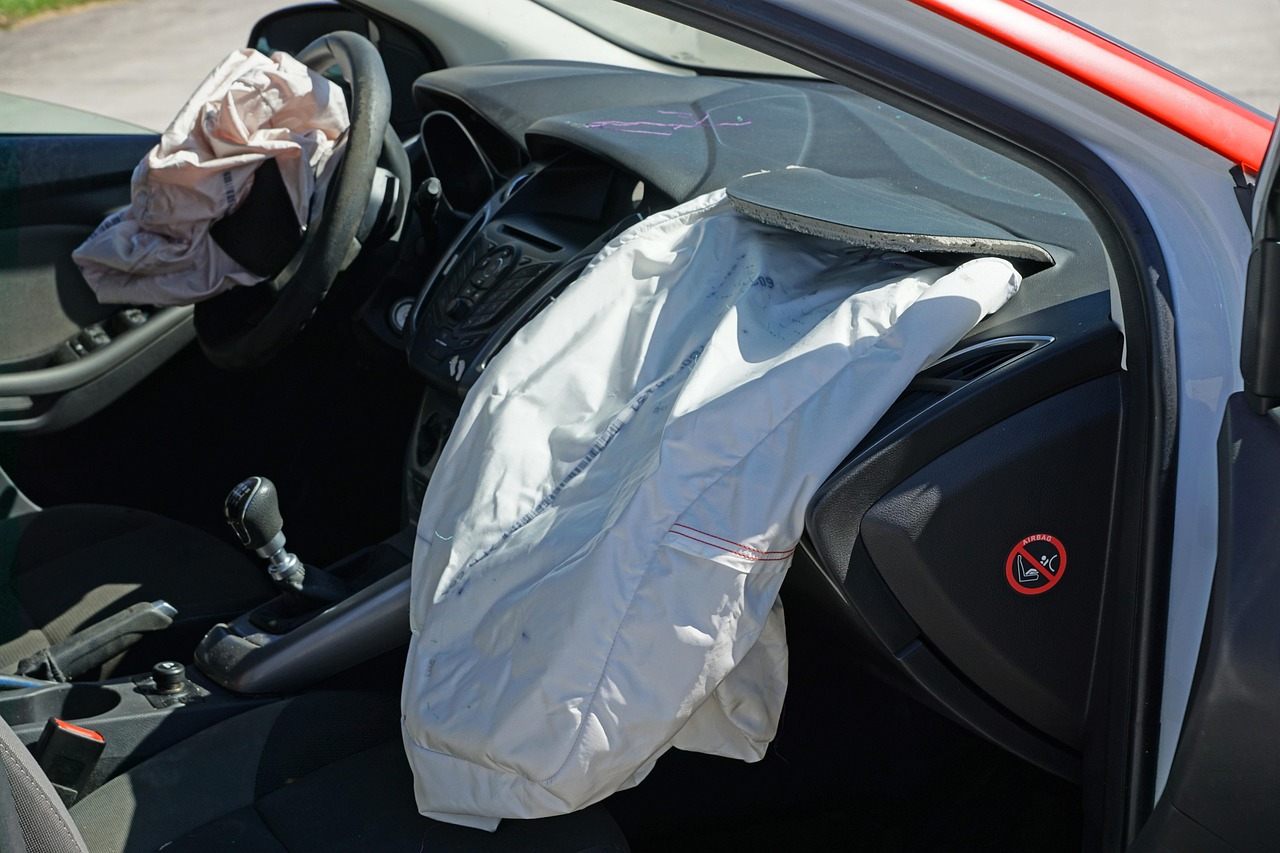In the blog post Types of Car Insurance: Complete Guide to Coverage, Requirements and Options readers will discover essential insights into various car insurance types and why understanding them is crucial. The article breaks down different car insurance types covering necessary categories like liability, collision, and comprehensive insurance. It highlights state-mandated insurance requirements special options such as underinsured motorist and bodily injury liability, and how to assess which type of coverage best fits individual needs. By providing a comprehensive view of coverage options the article empowers readers to make informed decisions about their car insurance, ensuring they have the right protection for peace of mind. Whether you’re a seasoned driver or new to the road, this guide equips you with the knowledge to navigate the complexities of car insurance effectively.
Introduction: Why Understanding Types of Car Insurance Matters

Understanding the different types of car insurance is crucial for every driver, as it helps individuals make informed decisions regarding their coverage options. With the multitude of policies available, knowing which type aligns with specific needs can save both time and money. Moreover, selecting the appropriate insurance can be the difference between a smooth claims process and facing significant out-of-pocket expenses after an accident.
Key Reasons to Understand Car Insurance Types
- Ensures compliance with legal requirements.
- Helps in assessing risk and financial protection.
- Guides in comparing and choosing the best policy.
- Informs on optional add-ons for enhanced coverage.
- Reduces the likelihood of misunderstandings during claims.
- Facilitates better budgeting for insurance expenses.
- Empowers drivers with knowledge for negotiations.
By grasping the various types of car insurance available, individuals can tailor their policies to satisfy their unique circumstances. For instance, while liability insurance is mandated in most states comprehensive and collision coverage may offer additional peace of mind for those wanting extra protection. Understanding these distinctions allows drivers to assess not only what is required, but what can provide optimal financial security against unforeseen incidents on the road.
Additionally, learning about the different types of car insurance can facilitate a more confident and informed approach when selecting a provider. Each insurance company might offer varying options and premiums based on risk assessment, driving history, and vehicle type. Being knowledgeable about what types of coverage exist, and how they work, empowers consumers to analyze quotes effectively and select plans that truly fit their needs.
Different Types of Car Insurance Explained
Understanding the different types of car insurance is crucial for selecting the right coverage that meets your needs. Each type serves a unique purpose and can either protect you, your vehicle, or both in the event of an accident or damage. As you explore these options consider how each fits into your overall financial planning and risk management strategy.
When seeking the right policy, it’s vital to evaluate the variety of options available. Car insurance can be broadly categorized into several types each designed to offer specific protections. These categories include liability, collision, comprehensive coverage, and more. By recognizing the distinctions you can make an informed choice that corresponds to legal requirements and personal preferences.
Key Types of Car Insurance
- Liability Insurance
- Collision Insurance
- Comprehensive Insurance
- Personal Injury Protection (PIP)
- Uninsured/Underinsured Motorist Coverage
- Medical Payments Coverage
- Rental Car Reimbursement
Each of these different types of car insurance not only varies in what they cover but also in their cost implications. For instance, liability insurance is typically the minimum required by law and covers damages to other people’s property and medical bills if you’re at fault in an accident. In contrast, comprehensive and collision insurance cover damages to your own vehicle, offering added peace of mind for your investment.
Liability Insurance
Liability insurance is fundamental and is often mandated by law in many states. It protects you financially if you cause an accident resulting in property damage or injuries. This type of coverage consists of two main components: bodily injury liability, which includes medical expenses for the other party, and property damage liability, which covers repairs to damaged property. Knowing your state’s minimum coverage requirements is essential, but considering higher limits can offer additional security.
Comprehensive and Collision Insurance
Comprehensive and collision insurance provide extensive protection for your vehicle. Collision insurance covers repairs to your car after an accident, regardless of who is at fault, while comprehensive insurance protects against non-collision incidents like theft, vandalism, or natural disasters. Opting for both can significantly enhance your financial safety net but may increase your insurance premiums as well. It’s important to weigh these factors carefully when deciding on the coverage that best suits your circumstances.
Types of Car Insurance Coverage You Should Know
Understanding the types of car insurance coverage is crucial for selecting the right policy that fits your needs. Each coverage type offers different levels of protection, and it’s important to discern how they work together to provide comprehensive safety on the road. Choosing the correct combination of coverage can not only save you money but also give you peace of mind while driving. It’s essential to familiarize yourself with what each coverage entails particularly if you want to avoid costly surprises in the event of an accident.
In the table below, we outline various types of car insurance coverage along with their essential features. This overview serves as a helpful guide to navigate the complexities of auto insurance and make informed decisions about what you might need.
| Type of Coverage | Key Features | Typical Costs |
|---|---|---|
| Liability Coverage | Covers damages to other drivers and their vehicles | Generally lower premiums |
| Collision Coverage | Covers damages to your vehicle from a collision | Higher than liability, but necessary for newer cars |
| Comprehensive Coverage | Covers non-collision related incidents like theft or vandalism | Higher costs depending on the value of the car |
| Personal Injury Protection | Covers medical costs for drivers and passengers | Costs vary based on state requirements |
When considering your options it’s often wise to start with minimum coverage, which refers to the least amount of insurance required by your state. This typically includes liability coverage, which protects you if you are responsible for an accident that causes injury or property damage to others. However, while minimum coverage meets legal requirements it may not provide adequate financial protection in more serious incidents. Understanding these baseline protections can help you gauge what additional coverage may be necessary.
Minimum Coverage
The minimum coverage often serves as a foundation for car insurance policies. While it ensures compliance with state laws it might leave gaps in financial coverage under certain circumstances. For instance, if you cause significant damage or injuries your liability limits may be quickly reached, imposing out-of-pocket costs on you. Therefore, it’s essential to examine if going beyond minimum coverage aligns with your risk tolerance and peace of mind.
Full Coverage
In contrast to minimum coverage, full coverage typically includes not only liability but also collision and comprehensive coverage. This type of insurance protects your vehicle against various risks from accidents to theft. It may be more costly but offers a robust safety net, especially for those who finance or lease their vehicles. By combining these elements full coverage can significantly reduce your financial exposure in the event of an unfortunate incident.
Additional Coverage Options
Beyond the basic and full coverage types there are also several additional coverage options that can enhance your policy. These may include features like uninsured motorist protection, which is crucial in protecting you if you are involved in an accident with a driver who lacks adequate insurance. Other options include personal injury protection (PIP) and gap insurance, which helps cover the loan amount if your vehicle is totaled. Evaluating these additional options can provide a more comprehensive safety net tailored to your individual driving habits and financial circumstances.
Car Insurance Types of Coverage: From Liability to Full Protection
Understanding the various types of car insurance coverage is essential for every driver. Each type of coverage serves a distinct purpose and comes with different benefits and responsibilities. To make an informed decision, it’s crucial to know what each coverage entails and how it aligns with your personal needs and legal requirements. This knowledge helps you navigate through various policies ensuring that you acquire the right coverage to protect yourself, your vehicle, and other road users.
Types of Coverage Explained
- Liability Coverage: Covers damages to other vehicles or property if you’re at fault in an accident.
- Collision Coverage: Reimburses you for damages to your vehicle from an accident, regardless of fault.
- Comprehensive Coverage: Protects against non-collision-related damages such as theft, vandalism, and natural disasters.
- Personal Injury Protection (PIP): Covers medical expenses for you and your passengers regardless of fault.
- Uninsured/Underinsured Motorist Coverage: Offers protection if you’re involved in an accident with a driver who lacks sufficient insurance.
- Medical Payments Coverage: Pays for medical expenses for you and your passengers regardless of fault, in an accident.
- Gap Coverage: Covers the difference between what you owe on your car loan and the car’s actual cash value if it’s totaled.
The next category to discuss is liability coverage. Liability coverage is often mandated by law and protects you against financial responsibility when you’re at fault in an accident. It typically includes both bodily injury and property damage components. Bodily injury liability covers medical costs for injured individuals while property damage liability addresses repairs or replacement for damaged property. Understanding the limits of this coverage is vital, as exceeding these limits can lead to significant out-of-pocket expenses.
Comprehensive Coverage
Another important type of car insurance is comprehensive coverage. This policy goes beyond typical accident protection by covering damages not related to collisions such as theft, fire, or natural disasters. This type of coverage can be particularly valuable if you live in an area prone to severe weather or have a high-value vehicle that requires additional protection. By opting for comprehensive coverage, you can ensure that you have peace of mind in case of unforeseen events that could damage your vehicle.
What Type of Car Insurance Is Required by Law?
When it comes to car insurance, the regulations vary significantly from state to state. Understanding the types of car insurance that are legally mandated is crucial for any vehicle owner. Typically, the minimum requirements include liability coverage, which protects against damages to other people and their property in the event of an accident. Additionally, some states may require personal injury protection (PIP), which covers medical expenses for you and your passengers regardless of who is at fault.
In most cases liability insurance is categorized into two types: bodily injury liability and property damage liability. Bodily injury liability covers costs associated with injuries to other parties while property damage liability compensates for damage to another person’s vehicle or property. It’s important to note that the required coverage amounts can vary, so it’s essential to check your state’s laws for specifics.
Required Insurance Coverage by State
- California: Minimum of $15,000 for bodily injury per person, $30,000 per accident, and $5,000 for property damage.
- New York: Minimum of $25,000 for bodily injury per person, $50,000 per accident, and $10,000 for property damage.
- Texas: Minimum of $30,000 for bodily injury per person, $60,000 per accident, and $25,000 for property damage.
- Florida: Minimum of $10,000 in PIP coverage and $10,000 for property damage liability.
- Michigan: Minimum of $250,000 for personal injury protection, along with property damage coverage.
It is essential to be aware of state-specific requirements to avoid penalties and ensure compliance with the law. By understanding the mandatory insurance types in your state, you can make informed decisions about your coverage needs and ensure you have the necessary protection while on the road.
Special Coverage Options: Underinsured Motorist and Bodily Injury Liability
When discussing types of car insurance, understanding specialized coverage options such as underinsured motorist coverage and bodily injury liability is crucial. These options provide essential financial protection in scenarios where the other party involved in an accident lacks sufficient insurance to cover damages or injuries. Specifically, underinsured motorist coverage ensures that if you are in an accident caused by a driver with inadequate insurance, you will still be protected against potential medical expenses and property damage.
Special Coverage Options Available
- Underinsured Motorist Coverage
- Bodily Injury Liability Coverage
- Uninsured Motorist Coverage
- Personal Injury Protection
- Medical Payments Coverage
- Collision Coverage
- Comprehensive Coverage
Another vital aspect of car insurance is bodily injury liability. This type of coverage is designed to protect you if you cause an accident that results in bodily harm to another person. It not only covers the medical expenses incurred by the injured party but may also include legal fees if a lawsuit is filed against you. It is important to maintain adequate levels of this coverage as it serves as a safeguard against potentially devastating financial liabilities resulting from car accidents.
Both underinsured motorist and bodily injury liability coverages are essential components of a robust car insurance policy. Understanding these options can help you make informed decisions when choosing your coverage.
In conclusion, integrating both underinsured motorist and bodily injury liability coverage into your car insurance policy is a proactive strategy to ensure comprehensive financial security. As you navigate the various types of car insurance, it is essential to evaluate your individual needs and the potential risks you may face while driving. Be sure to discuss these options with your insurance provider to secure the maximum protection possible.
How to Choose the Best Type of Car Insurance for Your Needs
When it comes to selecting the right type of car insurance, understanding your specific requirements is essential. Factors such as the make and model of your vehicle, your driving habits and your financial situation can significantly influence your decision. Additionally, state regulations may dictate minimum coverage levels making it crucial to familiarize yourself with local requirements to avoid penalties. Taking the time to consider these aspects will aid in choosing the best coverage for your needs.
One effective strategy is to start by evaluating how much coverage you realistically need. This includes considering whether you want to protect only against potential liabilities or if you also wish to safeguard your investment with comprehensive and collision coverage. Every driver will have different circumstances that influence their insurance choices; thus making these distinctions is a vital step before purchasing a policy.
Assessing Your Coverage Needs
Before diving into purchasing options take an inventory of your coverage needs. Assessing these needs involves considering various factors such as your driving frequency, the age of your vehicle, and your overall financial resiliency. A younger driver with a new car might prioritize more comprehensive coverage, while an experienced driver with an older vehicle may find that minimal liability coverage suffices.
Steps to Choose the Right Car Insurance
- Identify Your Coverage Needs: Assess what types of coverage are essential for your situation.
- Research State Requirements: Understand the minimum coverage mandated by your state.
- Gather Multiple Quotes: Compile quotes from different insurance companies to find the best options.
- Compare Policy Features: Examine what each policy offers beyond price, such as deductible levels and add-ons.
- Review Customer Feedback: Look into customer reviews and satisfaction ratings for each insurer.
- Consult with an Agent: Seek advice from a professional insurance agent to clarify complex options.
- Make an Informed Decision: Choose a policy that balances coverage and affordability.
Once you have a comprehensive list of potential insurers you can compare their quotes policy features and customer feedback. This comparison not only helps you find the best prices but also gives you an understanding of which companies offer superior service and claims support. Ultimately, making a well-informed choice will lead to the best coverage that fits your needs and budget.
Conclusion: Choosing the Right Types of Car Insurance for Peace of Mind
In conclusion, selecting the appropriate types of car insurance is crucial for achieving peace of mind while driving. Understanding the spectrum of coverage available can help you avoid common pitfalls and ensure you are protected in various situations. Whether it’s liability, comprehensive, or collision coverage, each type serves a unique purpose tailored to your individual needs and circumstances.
Actionable Takeaways
- Assess your driving habits and choose a policy that reflects your needs.
- Research state requirements to ensure you meet the minimum coverage mandated by law.
- Consider additional coverage options like uninsured motorist protection, for added security.
- Regularly review and compare different types of car insurance to find the best rates and coverage.
- Take advantage of discounts offered by insurers for safe driving records or bundling policies.
- Consult with an insurance agent for personalized advice that aligns with your financial goals.
- Stay informed about changes in insurance laws that may affect your coverage options.
Choosing the right car insurance can be a daunting task, but it is essential for safeguarding your assets and well-being on the road. By prioritizing informed decisions and regularly updating your policy, you can feel confident that you are adequately protected, no matter what challenges arise. Additionally, making use of resources such as online tools and expert advice, can further simplify the selection process.
Effective car insurance is not just about meeting legal requirements; it’s about ensuring that you feel secure and protected at every mile.
Ultimately, the peace of mind that comes with the right coverage is invaluable. By understanding the types of car insurance available, you empower yourself to make better decisions that can positively impact your financial health and driving experience. Prioritize your safety and choose wisely to ensure that you and your vehicle are covered when it matters most.







